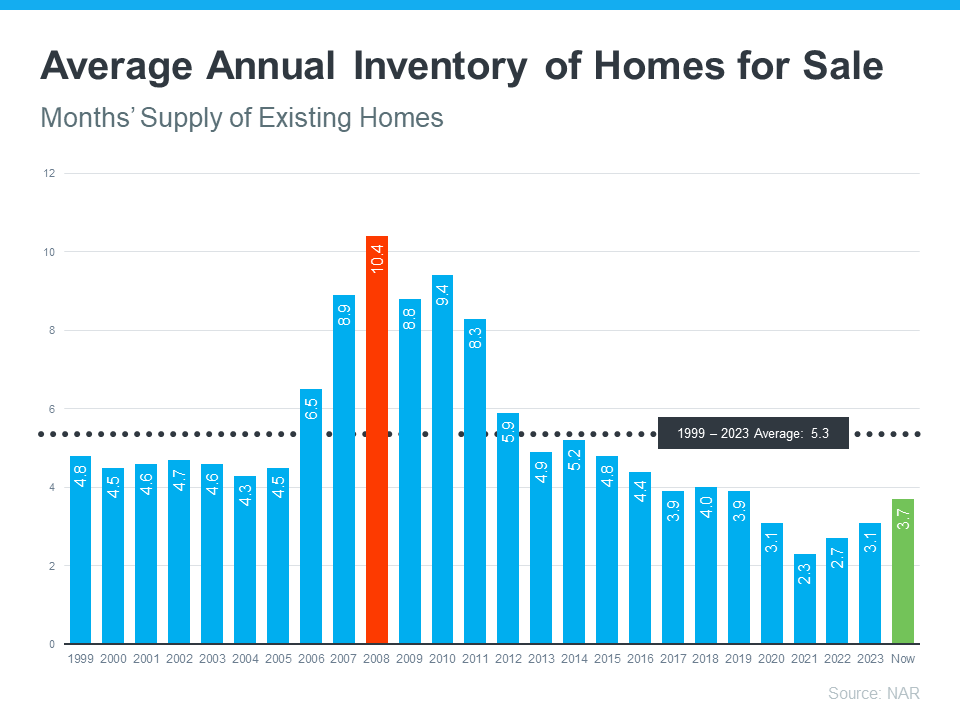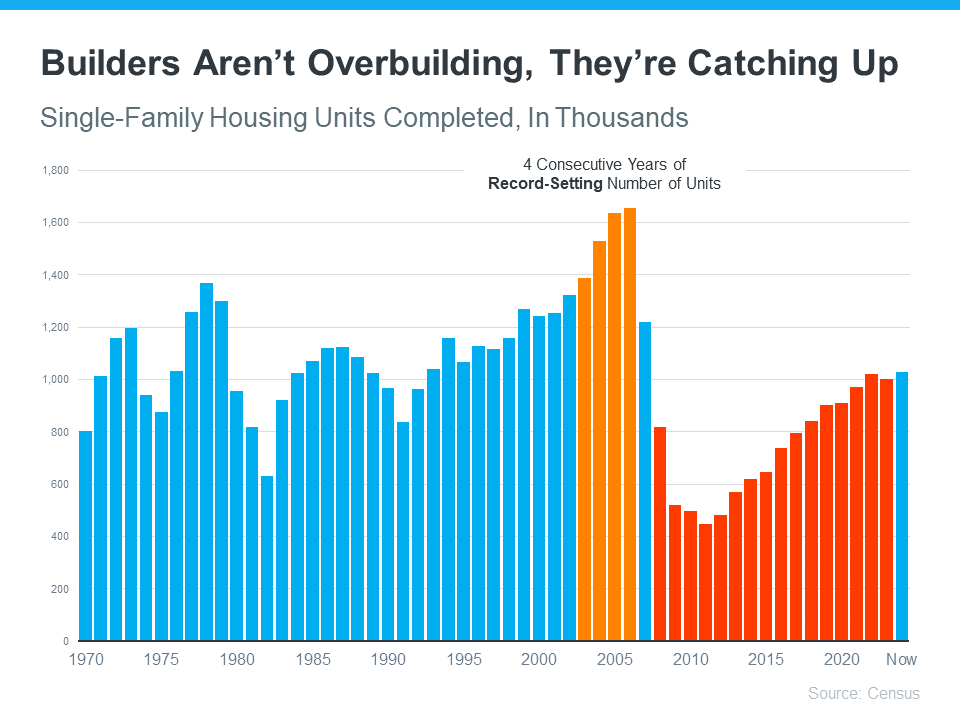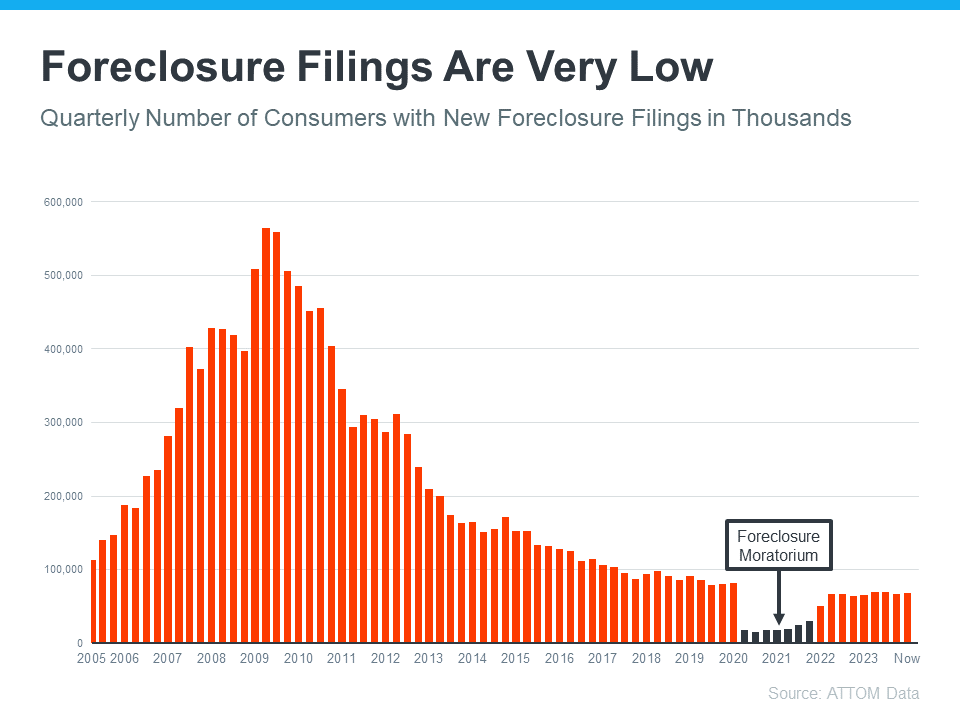Not a Crash: 3 Graphs That Show How Today’s Inventory Differs from 2008

If you lived through the housing crisis of 2008, you understand the profound impact it had on the economy and people’s lives. It’s natural to wonder if history could repeat itself, but the current housing market paints a different picture altogether. Here’s why today’s inventory dynamics make a crash unlikely.
Experts’ Reassurance: Why 2024 Isn’t 2008
Despite concerns about the housing market’s stability, experts are confident in their assessments. According to Business Insider, economists who specialize in housing market conditions overwhelmingly predict that a crash akin to 2008 is not on the horizon. The primary reason behind this optimism lies in the current supply-demand dynamics.
Inventory Sources: A Closer Look
To understand why today is different, it’s crucial to examine where housing inventory comes from and how it compares to 2008.
1. Homeowners Deciding To Sell Their Houses
While there has been an increase in the supply of existing homes compared to the previous year, the overall inventory remains low. Nationally, the months’ supply of homes for sale is significantly below historical norms and well below levels seen during the crash of 2008. The graph below illustrates this stark contrast between today’s inventory levels (green) and those during the peak of the crisis (red).
Graph: Comparing Current Inventory to 2008

This scarcity of homes for sale indicates that there simply aren’t enough properties available to trigger a significant decline in home values. Unlike 2008, where a surplus of homes flooded the market, today’s market faces an undersupply that supports stable or appreciating home prices.
2. New Home Construction

There’s been much discussion about the rate of new home construction and whether it could lead to oversupply. However, data from the Census Bureau reveals a different story. While new homes constitute a larger share of total inventory compared to historical averages, there is no evidence of overbuilding akin to the pre-2008 period. The graph below illustrates the consistent underbuilding trend (in red) that has persisted since the Great Recession.
Graph: New Home Construction Trends
Builders today are cautious, mindful of the lessons learned during the housing crisis. This cautious approach has resulted in a persistent shortage of homes for sale, rather than an excess.
3. Distressed Properties (Foreclosures and Short Sales)

During the housing crisis, a surge in foreclosures contributed significantly to the market crash. Today, however, stricter lending standards have led to a healthier mortgage environment with fewer foreclosures. The graph below, using data from ATTOM, highlights the decline in foreclosures post-2008 and the impact of recent foreclosure moratoriums and forbearance programs.
Graph: Foreclosure Rates Post-2008
While foreclosure rates have ticked up recently compared to historic lows, they remain well below levels observed during the crisis. This uptick is more indicative of a return to normalcy rather than a precursor to another crash.
What Does This Mean for Homebuyers?
Given the current inventory dynamics and expert assessments, the likelihood of a housing market crash in 2024 remains low. As Forbes emphasizes, while home prices continue to rise, driven by high demand and limited supply, the fundamentals do not support an imminent collapse. Economists such as Mark Fleming and Lawrence Yun underscore the basic principles of supply and demand, indicating that the current imbalance is more about scarcity than excess.
Conclusion: A Different Landscape
In conclusion, the housing market of today stands on fundamentally different ground than it did in 2008. With limited inventory, cautious new home construction, and stricter lending practices, the conditions for a repeat of the crisis are not in place. Homebuyers and investors can approach the market with confidence, knowing that while challenges exist, a crash of the magnitude experienced in 2008 is unlikely.
If you’re considering entering the housing market or have concerns about its stability, let’s connect. Understanding the nuances of today’s market can help you make informed decisions and navigate towards your homeownership goals with confidence.
Recent Posts










GET MORE INFORMATION
